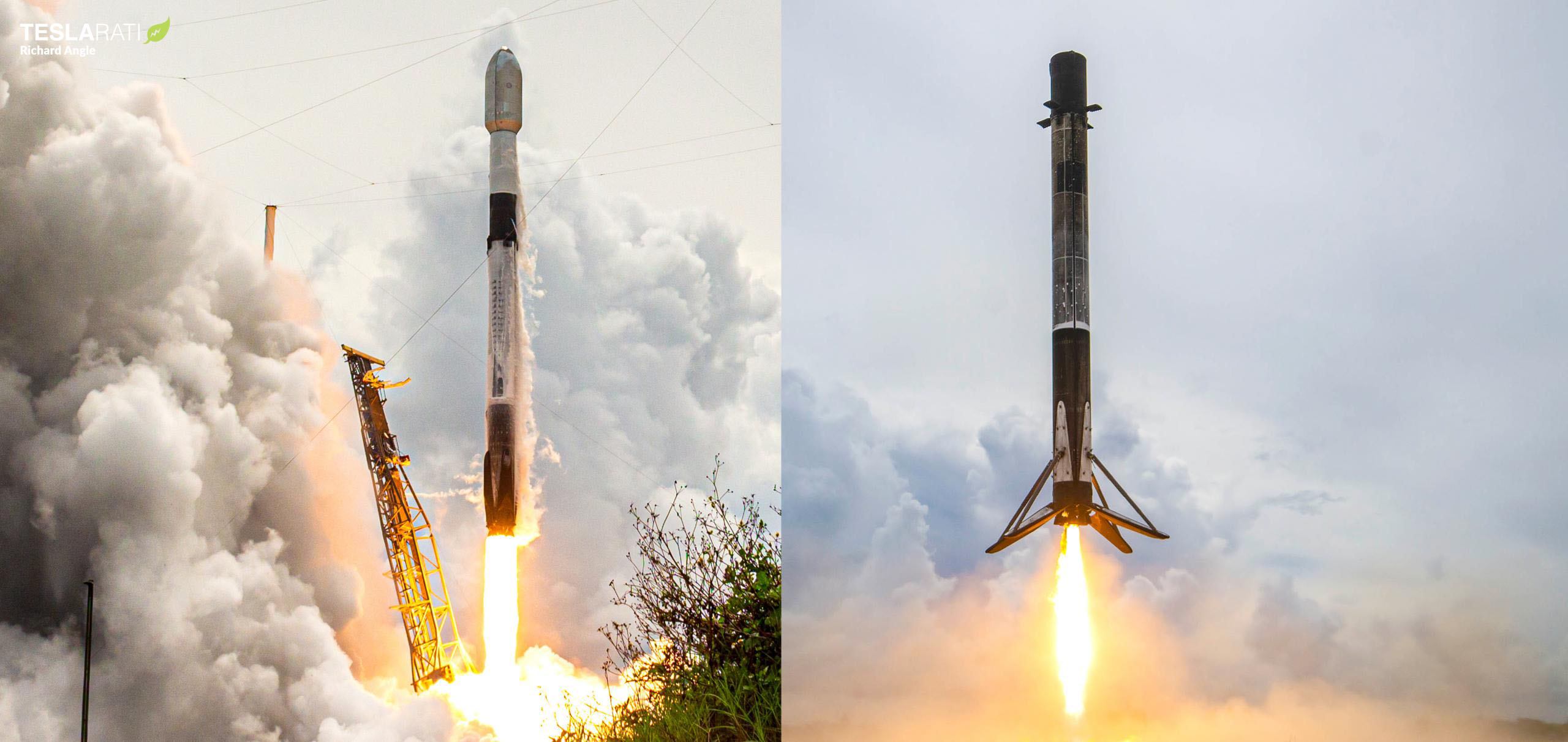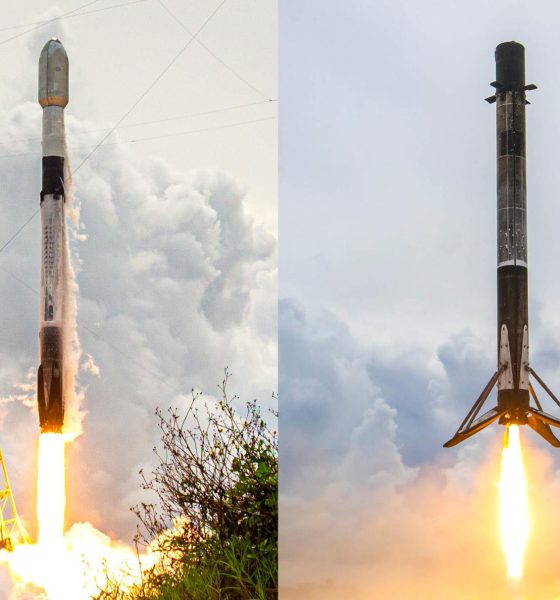SpaceX is in the final stages of preparing a trio of Falcon 9 rockets for a set of launches scheduled less than two days apart.
The potential hat trick will likely be the last opportunity for a salvo of Falcon launches before the end of 2022. As a disclaimer, while unofficial launch dates (derived from regulatory documents or well-sourced public manifests) were consistently close to actual launch dates for most of 2022, that ceased to be the case when SpaceX began experiencing an abrupt uptick in launch delays over the last two months. As a result, Falcon launch dates – even once confirmed by SpaceX – should be assumed to be a bit more uncertain than usual until it’s clear that that trend has died down.
Nonetheless, all available signs indicate that SpaceX and its customers are moving forward with plans for three back-to-back launches before the end of the week.
The update that's rolling out to the fleet makes full use of the front and rear steering travel to minimize turning circle. In this case a reduction of 1.6 feet just over the air— Wes (@wmorrill3) April 16, 2024
Set to kick off the diverse trio is the Surface Water and Ocean Topography (SWOT) spacecraft, a roughly $1.2 billion joint mission between NASA and French space agency CNES. Thanks in part to the COVID pandemic, which has and continues to impact large swaths of NASA and the aerospace industry, NASA’s Jet Propulsion Laboratory completed its portion of SWOT around 9% over budget and eight months behind schedule [PDF] since mission formulation began in 2012. Over a similar time scale, several other NASA missions have experienced cost increases of 10-100%, generally reflecting well on SWOT’s management.
SWOT, a roughly two-ton (~4400 lb) satellite, is designed to conduct the first global survey of all surface water on Earth using two large synthetic aperture radar (SAR) antennas and a conventional radar altimeter. At a cost of roughly $112 million, a SpaceX Falcon 9 rocket is scheduled to launch SWOT to low Earth orbit (LEO) no earlier than (NET) 3:46 am PST (11:46 UTC) on Thursday, December 15th. SpaceX successfully tested SWOT’s Falcon 9 well in advance on December 10th. The rocket was then returned to the company’s hangar at Vandenberg Space Force Base (VSFB) Space Launch Complex 4E for payload installation before rolling back to the pad on December 13th.
The light satellite and low target orbit will allow Falcon 9’s booster to return to the launch site and land at SpaceX’s LZ-4 landing zone, precluding the need for a drone ship recovery.
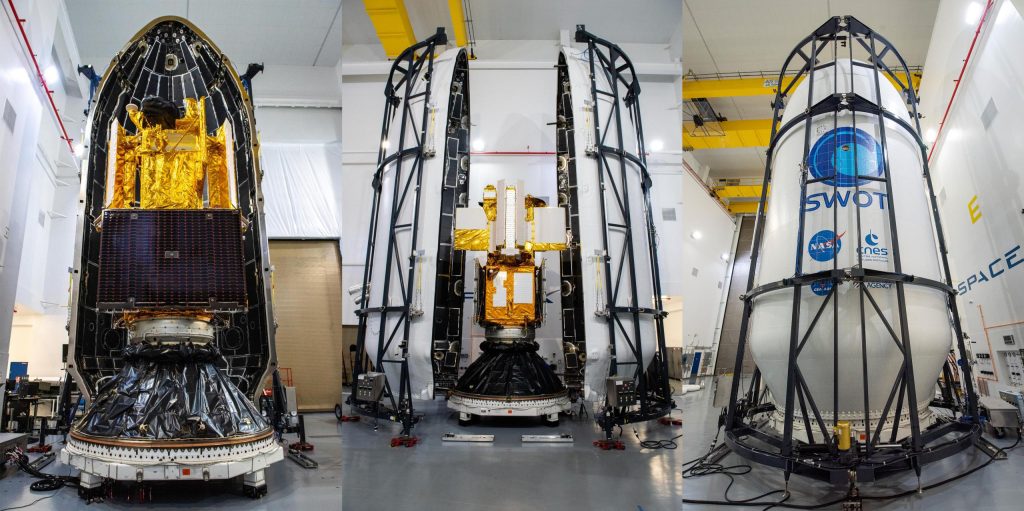
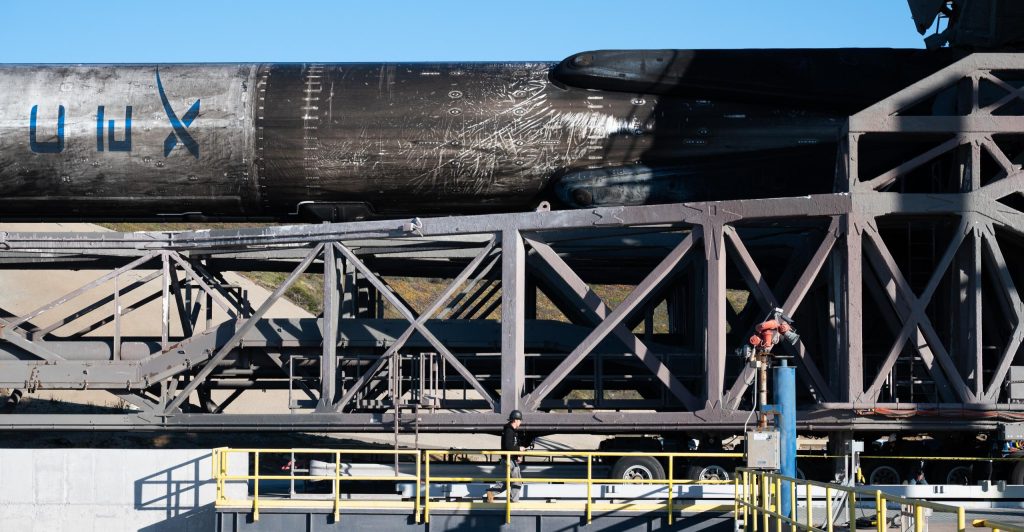
Up next, another Falcon 9 rocket is scheduled to launch the first two of eleven Boeing-built O3b mPOWER communication satellites for operator SES as early as 4:21 pm EST (21:21 UTC), Friday, December 16th. After lifting off from SpaceX’s Cape Canaveral Space Force Station (CCSFS) LC-40 pad, Falcon 9 is set to launch the roughly 3.4-ton (~7500 lb) pair of satellites to a medium Earth orbit (MEO) with an altitude of 7825 kilometers (4862 mi).
It’s unclear what orbit Falcon 9 will launch the satellites to, but the rocket’s booster will land on drone ship A Shortfall of Gravitas (ASOG) some 700 kilometers (~435 mi) downrange, indicating that it will need as much performance as the rocket can give. ASOG departed Port Canaveral on December 11th, confirming that launch preparations are well underway.
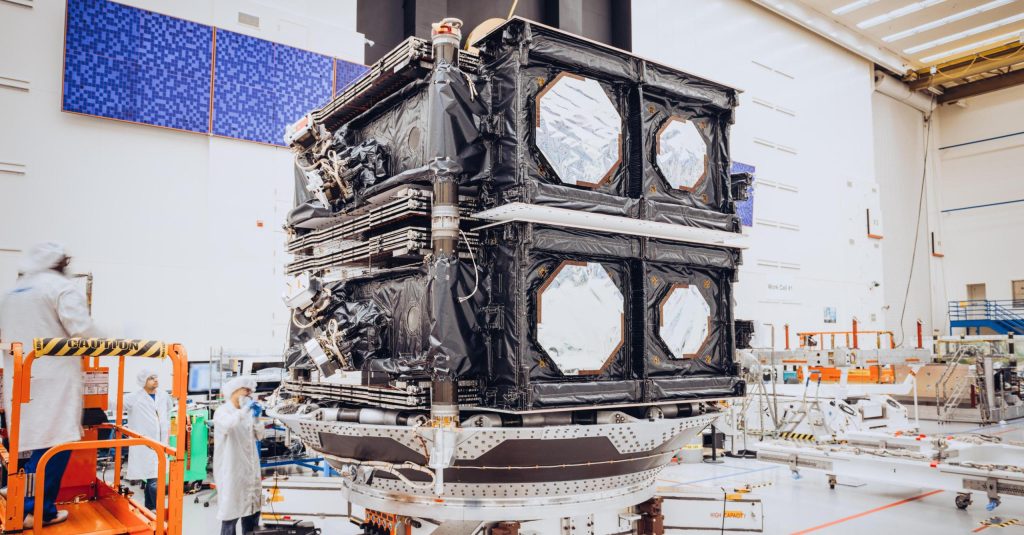
Finally, a third Falcon 9 rocket could launch SpaceX’s first Starlink mission since October 28th as early as 4:54 or 5:13 pm EST (21:54 or 22:13) on December 16th, potentially just 33 or 52 minutes after O3b mPOWER 1&2. If the two missions do launch on December 16th, which a reliable source of unofficial information has indicated is not guaranteed, it will smash the US record for back-to-back launches of the same rocket family. Russia’s R-7 rocket family will retain the international crown, however, having launched twice in 25 minutes in 1969.
Starlink 4-37 will lift off from SpaceX’s NASA Kennedy Space Center LC-39A pad, and its Falcon 9 booster will attempt to launch on drone ship Just Read The Instructions (JRTI). JRTI departed Port Canaveral on December 12th.
Following Starlink 4-37, SpaceX has at least two more launches tentatively scheduled before the end of 2022. NextSpaceflight.com reports that SpaceX could launch its sixth Transporter rideshare mission from Florida on December 27th, and two Israeli EROS-C3 Earth observation satellites out of California on December 29th. However, it’s worth noting that in the almost 17-year history of SpaceX Falcon operations, the company has never launched a rocket after December 23rd or before January 6th. Transporter-6 and EROS-C3 – SpaceX’s 60th and 61st launches of the year – would have to break through that apparent firewall to launch when they are currently scheduled.

News
Tesla Model 3 named New Zealand’s best passenger car of 2025
Tesla flipped the switch on Full Self-Driving (Supervised) in September, turning every Model 3 and Model Y into New Zealand’s most advanced production car overnight.
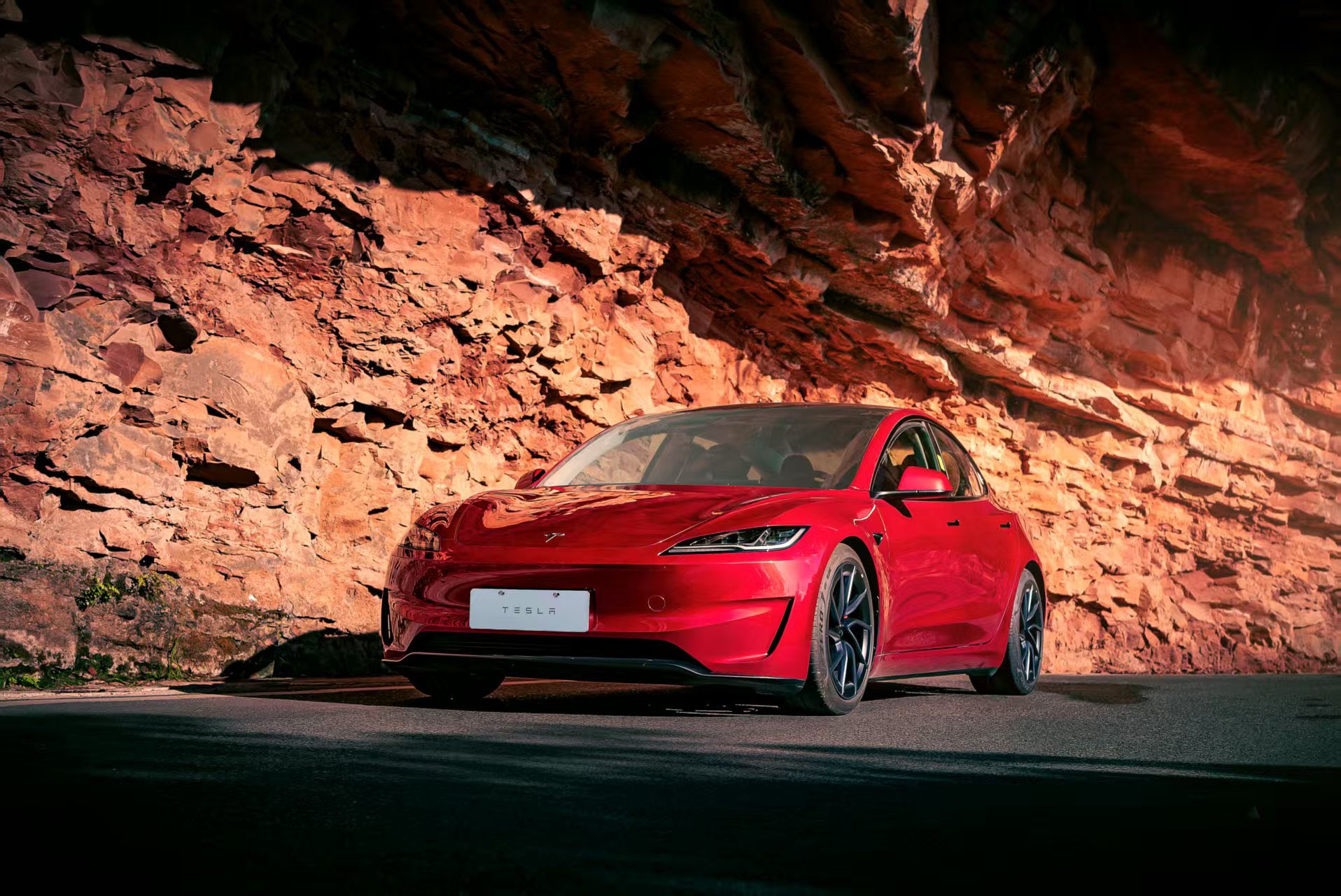
The refreshed Tesla Model 3 has won the DRIVEN Car Guide AA Insurance NZ Car of the Year 2025 award in the Passenger Car category, beating all traditional and electric rivals.
Judges praised the all-electric sedan’s driving dynamics, value-packed EV tech, and the game-changing addition of Full Self-Driving (Supervised) that went live in New Zealand this September.
Why the Model 3 clinched the crown
DRIVEN admitted they were late to the “Highland” party because the updated sedan arrived in New Zealand as a 2024 model, just before the new Model Y stole the headlines. Yet two things forced a re-evaluation this year.
First, experiencing the new Model Y reminded testers how many big upgrades originated in the Model 3, such as the smoother ride, quieter cabin, ventilated seats, rear touchscreen, and stalk-less minimalist interior. Second, and far more importantly, Tesla flipped the switch on Full Self-Driving (Supervised) in September, turning every Model 3 and Model Y into New Zealand’s most advanced production car overnight.
FSD changes everything for Kiwi buyers
The publication called the entry-level rear-wheel-drive version “good to drive and represents a lot of EV technology for the money,” but highlighted that FSD elevates it into another league. “Make no mistake, despite the ‘Supervised’ bit in the name that requires you to remain ready to take control, it’s autonomous and very capable in some surprisingly tricky scenarios,” the review stated.
At NZ$11,400, FSD is far from cheap, but Tesla also offers FSD (Supervised) on a $159 monthly subscription, making the tech accessible without the full upfront investment. That’s a game-changer, as it allows users to access the company’s most advanced system without forking over a huge amount of money.
News
Tesla starts rolling out FSD V14.2.1 to AI4 vehicles including Cybertruck
FSD V14.2.1 was released just about a week after the initial FSD V14.2 update was rolled out.

It appears that the Tesla AI team burned the midnight oil, allowing them to release FSD V14.2.1 on Thanksgiving. The update has been reported by Tesla owners with AI4 vehicles, as well as Cybertruck owners.
For the Tesla AI team, at least, it appears that work really does not stop.
FSD V14.2.1
Initial posts about FSD V14.2.1 were shared by Tesla owners on social media platform X. As per the Tesla owners, V14.2.1 appears to be a point update that’s designed to polish the features and capacities that have been available in FSD V14. A look at the release notes for FSD V14.2.1, however, shows that an extra line has been added.
“Camera visibility can lead to increased attention monitoring sensitivity.”
Whether this could lead to more drivers being alerted to pay attention to the roads more remains to be seen. This would likely become evident as soon as the first batch of videos from Tesla owners who received V14.21 start sharing their first drive impressions of the update. Despite the update being released on Thanksgiving, it would not be surprising if first impressions videos of FSD V14.2.1 are shared today, just the same.
Rapid FSD releases
What is rather interesting and impressive is the fact that FSD V14.2.1 was released just about a week after the initial FSD V14.2 update was rolled out. This bodes well for Tesla’s FSD users, especially since CEO Elon Musk has stated in the past that the V14.2 series will be for “widespread use.”
FSD V14 has so far received numerous positive reviews from Tesla owners, with numerous drivers noting that the system now drives better than most human drivers because it is cautious, confident, and considerate at the same time. The only question now, really, is if the V14.2 series does make it to the company’s wide FSD fleet, which is still populated by numerous HW3 vehicles.
News
Waymo rider data hints that Tesla’s Cybercab strategy might be the smartest, after all
These observations all but validate Tesla’s controversial two-seat Cybercab strategy, which has caught a lot of criticism since it was unveiled last year.
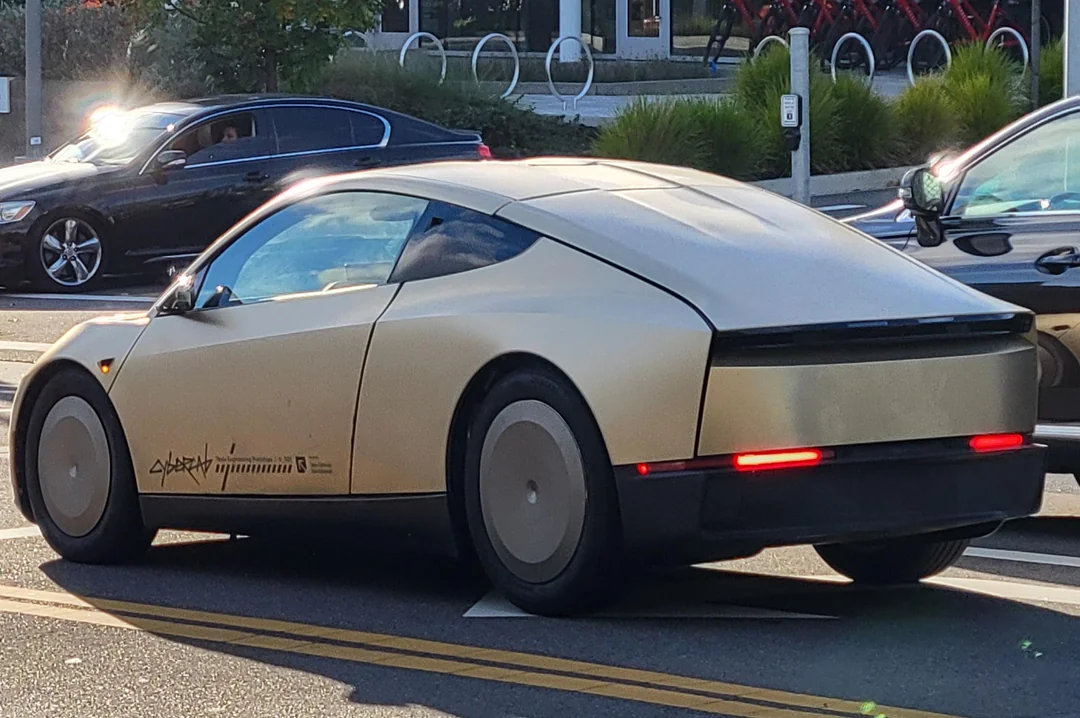
Toyota Connected Europe designer Karim Dia Toubajie has highlighted a particular trend that became evident in Waymo’s Q3 2025 occupancy stats. As it turned out, 90% of the trips taken by the driverless taxis carried two or fewer passengers.
These observations all but validate Tesla’s controversial two-seat Cybercab strategy, which has caught a lot of criticism since it was unveiled last year.
Toyota designer observes a trend
Karim Dia Toubajie, Lead Product Designer (Sustainable Mobility) at Toyota Connected Europe, analyzed Waymo’s latest California Public Utilities Commission filings and posted the results on LinkedIn this week.
“90% of robotaxi trips have 2 or less passengers, so why are we using 5-seater vehicles?” Toubajie asked. He continued: “90% of trips have 2 or less people, 75% of trips have 1 or less people.” He accompanied his comments with a graphic showing Waymo’s occupancy rates, which showed 71% of trips having one passenger, 15% of trips having two passengers, 6% of trips having three passengers, 5% of trips having zero passengers, and only 3% of trips having four passengers.
The data excludes operational trips like depot runs or charging, though Toubajie pointed out that most of the time, Waymo’s massive self-driving taxis are really just transporting 1 or 2 people, at times even no passengers at all. “This means that most of the time, the vehicle being used significantly outweighs the needs of the trip,” the Toyota designer wrote in his post.
Cybercab suddenly looks perfectly sized
Toubajie gave a nod to Tesla’s approach. “The Tesla Cybercab announced in 2024, is a 2-seater robotaxi with a 50kWh battery but I still believe this is on the larger side of what’s required for most trips,” he wrote.
With Waymo’s own numbers now proving 90% of demand fits two seats or fewer, the wheel-less, lidar-free Cybercab now looks like the smartest play in the room. The Cybercab is designed to be easy to produce, with CEO Elon Musk commenting that its product line would resemble a consumer electronics factory more than an automotive plant. This means that the Cybercab could saturate the roads quickly once it is deployed.
While the Cybercab will likely take the lion’s share of Tesla’s ride-hailing passengers, the Model 3 sedan and Model Y crossover would be perfect for the remaining 9% of riders who require larger vehicles. This should be easy to implement for Tesla, as the Model Y and Model 3 are both mass-market vehicles.
